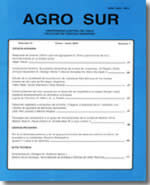Phosphorus uptake and utilization efficiency in wheat genotypes
Main Article Content
Abstract
Genetic variability in phosphorus efficiency was examined in spring wheat genotypes under field conditions at deficient and non -limiting levels of P fertilization in a P-deficient soil. Phosphorus efficiency was measured by three parameters: phosphorus efficiency ratio (PE), root efficiency ratio (RE) and phosphorus uptake efficiency (PUE). Grain yield was correlated with P content at maturity; genotypes with high grain yield had high P content of tops. At the low P application rate, large variation existed between genotypes in relation to phosphorus effciency ratio (PE), which was not correlated with grain yield. The genotypes were more root efficient (RE) at tillering initiation. In relation to the ability of wheat plants to obtain P from the soil (PUE), the genotypes differed in their P uptake strategy and were more efficient between tillering and anthesis; phosphorus application rate had no effect on PUE. The data presented in this paper suggests that the ability of plants to remove soil P would depend upon the PUE of plants, that is to say, from their ability to locate and acquire soil P, as well as the temporal uptake of soil P by the genotype. Selection for phosphorus uptake efficiency (PUE) may be of some benefit.

